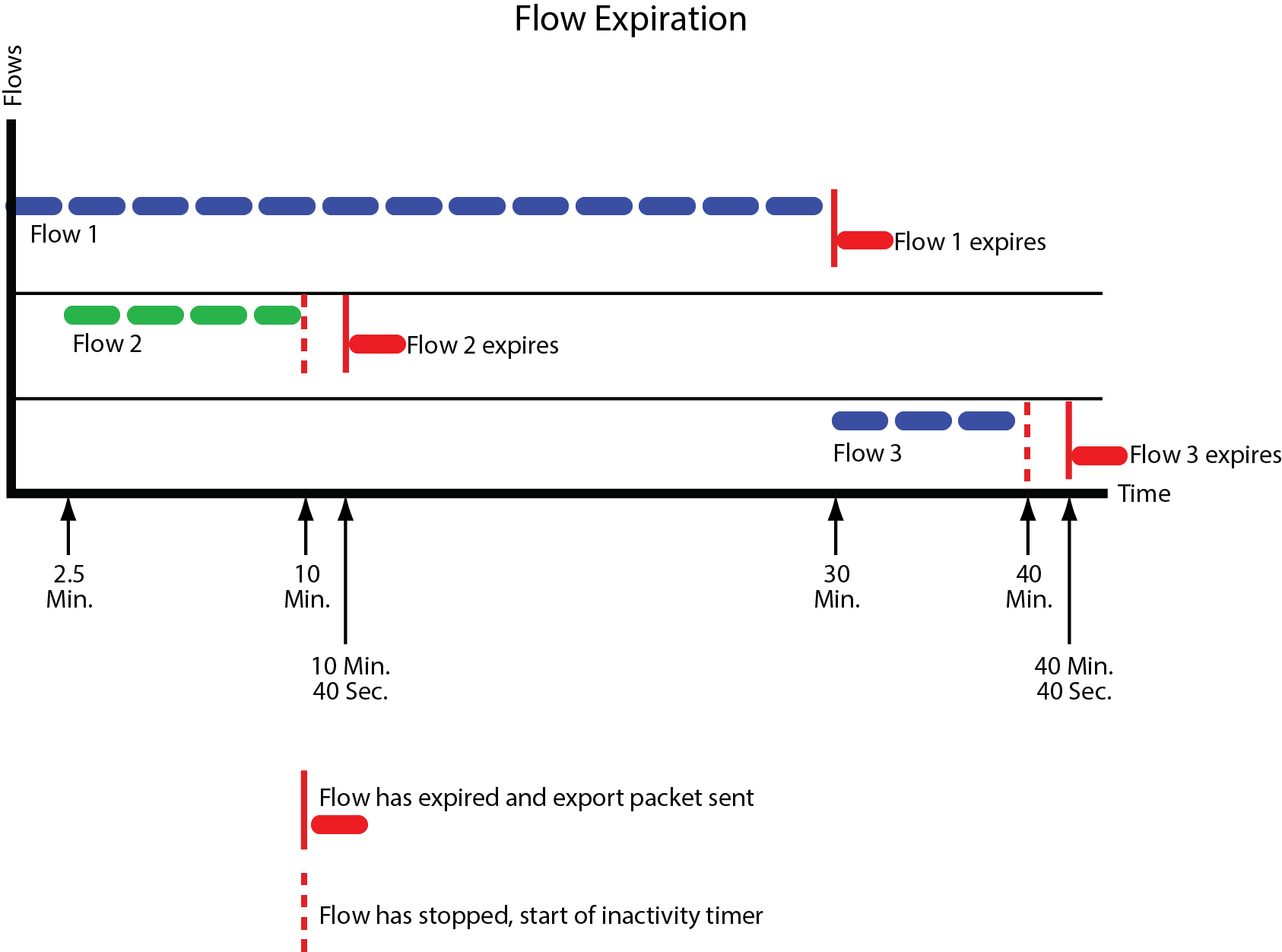Flow data records are not exported by the network switch to the NetFlow collector(s) until expiration takes place. There are two timers that affect flow expiration: the NetFlow active and inactive timers.
The active timer determines the maximum amount of time a long lasting flow will remain active before expiring. When a long lasting active flow expires, due to the active timer expiring, another flow is immediately created to continue the ongoing flow. It is the responsibility of the management application on the NetFlow collector to rejoin these multiple flows that make up a single logical flow. The active timer is configurable in the CLI (see Configuring the Active Flow Export Timer).
The inactive timer determines the length of time NetFlow waits before expiring a given flow once that flow has stopped. The inactive timer is a fixed value of 40 seconds and cannot be configured.
Rules for expiring NetFlow cache entries include:
Flow Expiration Timers provides a graphic depiction of how these timers interact. Flows 1 and 3 show a single long lasting logical flow. Flow 1 times out and expires at 30 minutes, the active timer length. Because the flow expires, an export packet is sent to the NetFlow collector. Flow 3 continues this long lasting flow for another 10 minutes. At time 40 minutes the flow ends. The 40 second inactive timer initiates and expires at 40 minutes and 40 seconds resulting in an export packet to the NetFlow collector for flow 3. At the NetFlow collector, the management application joins the two flows into a single logical flow for purposes of analysis and reporting.
Flow 2 is a 7.5-minute flow that never expires the active timer. It begins at 2.5 minutes and ends at 10 minutes. At 10 minutes the inactive timer commences and expires the flow at 10 minutes and 40 seconds. At this time, NetFlow sends an export packet for the flow to the NetFlow collector for processing.


 Print
this page
Print
this page Email this topic
Email this topic Feedback
Feedback